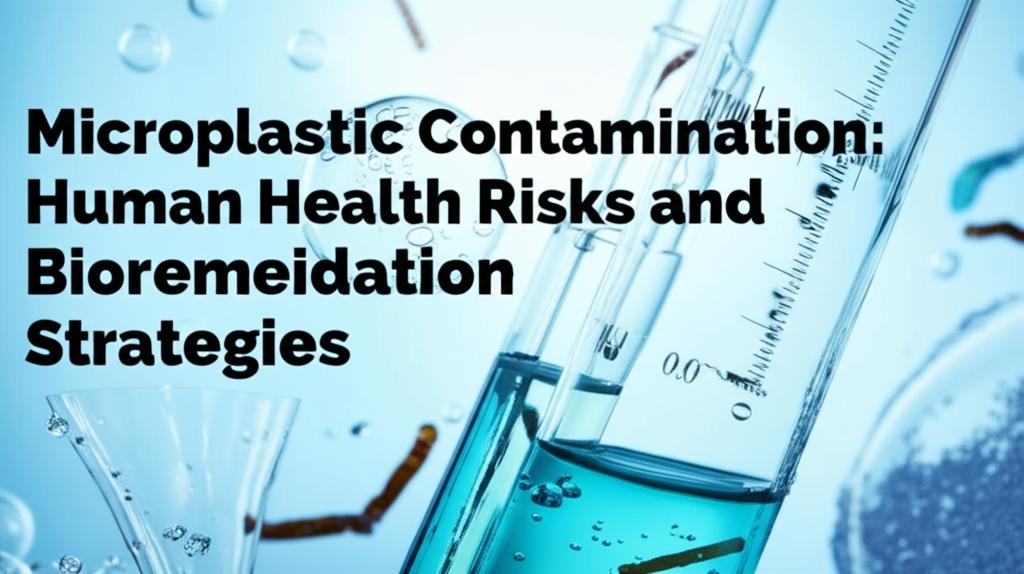Microplastics, tiny plastic fragments less than five millimeters long, have become an inescapable reality of modern life. They permeate nearly every environment on Earth, from the deepest oceans to the highest mountains, and are found in the air we breathe, the water we drink, and the food we eat. This pervasive contamination raises significant concerns about potential risks to human health.
Sources and Human Exposure PathwaysMicroplastics originate from two main categories: primary and secondary sources. Primary microplastics are intentionally manufactured small particles, such as microbeads in cosmetics (now banned in many places) or plastic pellets used in industrial processes. Secondary microplastics result from the breakdown of larger plastic items like bottles, bags, textiles, and fishing nets due to environmental factors like sunlight, wind, and wave action.
Humans are exposed to these particles through three primary routes:
- Ingestion: This is considered a major route. Microplastics contaminate drinking water (both tap and bottled), seafood, salt, sugar, honey, beer, and even fruits and vegetables (absorbed from contaminated soil). Food packaging and containers can also shed particles into food. Estimates suggest individuals may ingest tens of thousands to over a hundred thousand microplastic particles annually, potentially equivalent to the weight of a credit card each week.
- Inhalation: Microplastic fibers and particles are present in indoor and outdoor air, originating from synthetic textiles (clothing, carpets, furniture), city dust, industrial emissions, and vehicle tire wear. Indoor concentrations can often be higher than outdoor levels. These airborne particles can be inhaled deep into the lungs.
- Dermal Contact: While intact skin is generally considered a barrier, microplastics are found in personal care products like scrubs and creams. Furthermore, nanoparticles (even smaller than microplastics) might potentially be absorbed, and chemical additives within plastics deposited on the skin could be absorbed. Handling items like plastic phone cases can also transfer particles to the skin.
Once inside the body, research shows microplastics don't just pass through. They have been detected in numerous human tissues and fluids, including blood, lungs, liver, colon, spleen, lymph nodes, placenta, breast milk, semen, and even the brain and heart tissues. The organs with the highest reported concentrations include the colon and liver.
While research is ongoing and causal links in humans are still being definitively established for many conditions, mounting evidence points to potential health risks:
- Inflammation and Cellular Damage: Studies on human cells and organoids show microplastics can induce oxidative stress, DNA damage, inflammation, and cell death.
- Cardiovascular Impacts: A significant 2024 study published in The New England Journal of Medicine found that patients with microplastics detected in plaque removed from their carotid arteries had a substantially higher risk (more than double, up to 4.5 times reported in some summaries) of heart attack, stroke, or death over the following three years compared to those without detectable particles. Research presented in 2025 also linked higher community exposure to microplastic pollution with increased rates of chronic diseases like diabetes, stroke, and hypertension.
- Toxin Carriers: Microplastics act like sponges, absorbing harmful environmental pollutants (like pesticides and heavy metals) and leaching chemical additives (like BPA and phthalates) used during manufacturing. These toxins are known endocrine disruptors and can be linked to reproductive problems, developmental issues, and increased cancer risk.
- Immune and Metabolic Disruption: Animal studies suggest microplastics can impair immune function, alter gut microbiome composition, affect metabolism, and potentially contribute to reproductive issues like reduced sperm quality.
- Potential Cancer Link: Given their ability to cause chronic inflammation and DNA damage, and carry carcinogenic chemicals, there are concerns about a potential link to cancers, particularly in the digestive and respiratory systems, though more human data is needed.
Given the scale of microplastic contamination, finding effective remediation strategies is crucial. Bioremediation, which uses biological organisms or their enzymes to break down pollutants, offers a promising and potentially sustainable approach. Key strategies being explored include:
- Microbial Degradation: Certain bacteria and fungi possess enzymes capable of breaking down plastic polymers. Researchers are isolating and identifying microbes from environments like landfill sites and plastic waste dumps that show potential for degrading common plastics like polyethylene (PE), polypropylene (PP), and polyethylene terephthalate (PET). Fungi like Aspergillus, Penicillium, and Mucor species have shown promise.
- Enzyme Technology: Scientists have identified and are engineering specific enzymes, such as PETase and MHETase (originally found in bacteria near a plastic bottle recycling facility), which can break down PET plastic into its chemical precursors, allowing for potential recycling or further degradation.
- Biofilms: Microbial communities naturally form biofilms on surfaces, including plastics. These consortia of microorganisms can work synergistically to degrade plastics more effectively than single species. Research is exploring how to optimize biofilm formation and activity for bioremediation.
- Phycoremediation: Microalgae (like Spirulina) can colonize plastic surfaces and potentially contribute to their breakdown through enzymatic activity.
- Genetically Engineered Microorganisms: Using tools like CRISPR, scientists are modifying microbes to enhance their plastic-degrading capabilities, making them more efficient or able to target specific types of plastics.
- Phytoremediation: Plants and their associated root-zone (rhizosphere) microbes are being investigated for their ability to accumulate, immobilize, or potentially help degrade microplastics in contaminated soil.
- Role of Soil Fauna: Organisms like earthworms and mealworms can ingest microplastics, and their gut microbiota may contribute to the physical fragmentation and partial degradation of these particles.
While bioremediation holds significant potential, challenges remain. Degradation rates can be slow, and effectiveness varies depending on the plastic type and environmental conditions. Ensuring that the breakdown products are not harmful themselves is also critical. Further research and development are needed to scale up these technologies for real-world application.
Moving ForwardMicroplastic contamination is a complex global challenge with increasingly recognized potential human health implications. While the full extent of the long-term health risks requires further investigation, the current evidence warrants concern and action. Alongside developing innovative bioremediation strategies, reducing our reliance on single-use plastics, improving waste management infrastructure, and preventing plastic leakage into the environment are essential steps to mitigate this pervasive threat to ecosystems and human well-being.

